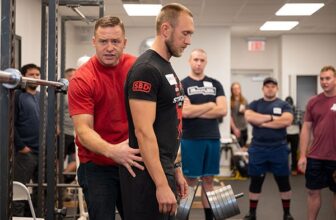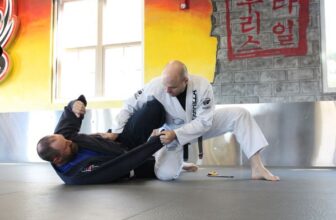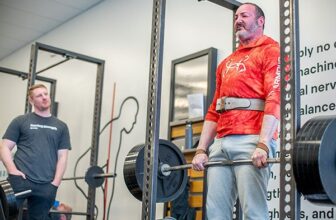
[adinserter block=”2″]
I would like to start out by saying that this article is in NO way an attempt to summarize, comment on, or review the essay of the same name written by Dutch satirist Desiderius Erasmus in the 16th century. I will attempt to write about lifting and getting stronger, so just be patient. To be perfectly honest, I know next to nothing about Erasmus or any of the writers of his time ( I must have been absent during Renaissance literature.) But what I AM writing about is an article which appeared in the May 1953 issue of Ironman magazine. The author of article in question was the late, great Harry Paschall. Mr. Paschall was a well known writer for Strength and Health and was one of York’s greatest advocates during the 1950s. If you’ve ever seen issues of S&H from that time period, you will instantly recognize his articles along with the famous Bosco cartoon character. I’ll leave it to the individual to judge the merits of Bosco and his monthly adventures, but Harry Paschall was a well-respected Iron Game writer who strongly believed in the use of weights and progressive resistance to build all-around strength and health.
While looking through the May 1953 edition of Ironman, I came across an article titled “In Praise of Folly,” and after looking at the byline, I figured that it just had to have some interesting opinions. Harry was not shy about stating his opinions about lifting, and his thoughts about bodybuilding are well known among those of us who have studied the old publications.
In the opening paragraph, Mr. Paschall explains, briefly, that the original essay by Erasmus was written with the intent of making light of obsolete customs of the period in question ( early 1500s). He then stated that In Praise of Folly could easily describe the world of muscle at that time. He specifically referred to some of the magazines that were popular at the time. “In what other line is so much completely silly propaganda published?” This was written over seventy years ago. A time that we ruefully refer to as the “good old days.” I can’t imagine what Harry Paschall would have to say about some of the silly stuff that gets published today.
It was no secret that Harry detested bodybuilding, and those who sought to merely pump, instead of lift. Harry followed the York/Hoffman system of building strong, useful, athletic bodies. Training for the sake of gaining size was anathema to Harry and the York gang. He lamented the fact that “LUMPS are the be-all and end-all of existence.”
When I read this, I immediately thought back to my days at Bruno’s. Larry “Bruno” Licandro HATED bodybuilding and bodybuilders. Pumped up muscles meant nothing to Larry, and he especially hated those who used steroids to pump up their bodies to laughable proportions. I can’t repeat the term that he actually used to describe bodybuilders, but I have always believed that Larry would be a proud contributor to www.naturalstrength.com. He definitely would be proud to wear some of “Maximum” Bob’s old t-shirts (No Toning. No Chrome. No Bull). In fact, I’ve often discussed this with Bob, and we both agree that he and Larry would have been good friends. Both gentlemen were raised on the York method of training, both men believed in heavy, basic workouts, and both detested the use of drugs, steroids, and other performance enhancers.
Getting back to the Ironman article, what Mr. Paschall is trying to get across to his readers is the fact that while lifting weights and seeking to get bigger and stronger are desirable and worthwhile goals, there comes a point where the average trainee will start reading the mainstream muscle mags and that will be his downfall. It is difficult to talk sense into a novice lifter who falls for the bogus articles that so many of these magazines use to advertise their worthless products. Trying to build 20” arms, or “cannonball deltoids,” or “barndoor lats,” are some of the problems that caused lifters to fall of the beam and into the world of abnormalcy, as he described it.
According to the article, there is a simple method to determine if your training has caused you to become “abnormal.” Simply stop exercising for about ten days. If, after ten days of inactivity, your measurements have decreased considerably, then you have entered the ranks of the “abnormal.” If you remain basically the same, then you are on the right track.
Pumping to gain size, isolation movements to get bigger bodyparts, training to the exclusion of strength are all concepts to be avoided. This is nothing new under the sun, even back in 1953. Training heavy on the basics, likewise, is nothing that has been published many times over the years. And abbreviated workouts have been used successfully for decades.
At the very end of the article, the is an Editor’s Note which states that they ( Peary Rader ) agree with many of Paschall’s points, there are other points with which they do not. To be honest, I feel the same way.
To begin with, Harry condemn the Bench Press and those who practice it. I couldn’t disagree more. The Bench Press is a fine exercise, in addition to being a competitive lift. Naturally, in the early 1950s, powerlifting was not a sport, while Olympic weightlifting was still very popular in the United States. Over the years, Olympic lifters would look down upon powerlifting and powerlifters. I’ve always felt that this was unnecessary and even silly. Yes, today in 2023 powerlifting has been reduced to a joke, overly reliant on equipment, supportive gear, and ridiculously lax judging. But the movements which make up the sport- Squat, Bench Press and Deadlift- are some of the most effective exercises for building strength. Not all people who practice the Bench Press are interested in simply pumping their pecs. Some very strong individuals have built great upper body strength by incorporating bench presses into their workouts. The key is to not overdo it. Unfortunately, due to the popularity of the lift, many people do just that.
There is another paragraph where I strongly disagree with Harry. “The wrestler with a 20 inch neck is not an object of admiration.” This quote jumped out at me. I’ve always felt that a large, strong neck is extremely important for everyone. Lifters, wrestlers, ALL athletes should train their necks. A thick, powerful neck is crucial for anyone who participates in any sort of contact sport. But other than its usefulness, a large, well-developed neck is just damn impressive. I can think of few bodyparts that are more impressive than a thick, powerful neck. So, sorry Mr. Paschall, I have to disagree with you on this one.
One more point with which I disagree is his statement that anything over 12 reps is unnecessary ( except for breathing squats). I think that there are several movements where high-reps can be quite beneficial. I’m thinking of Deadlifts, but there are other movements where high reps can build strength. Anyone who has had the pleasure of training with Dr. Ken will attest to the efficacy of high reps, from time to time.
So, after reading this article, I understand that there was a great deal of folly in the world of weights back in the early 1950s. There is a great deal of folly and misinformation today, in 2023. I suppose there will always be folly, bad ideas being disseminated through various forms of media, and outright lies about training. But as long as there are people who still like to lift hard, heavy, progressively, and drug-free then there will always be hope. And there will strong men and women to ensure that the tradition continues.
Editor’s Note: Thanks Jim! I agree. Me and Larry would have been great friends for sure.
[adinserter block=”2″]
Credit : Source Post






